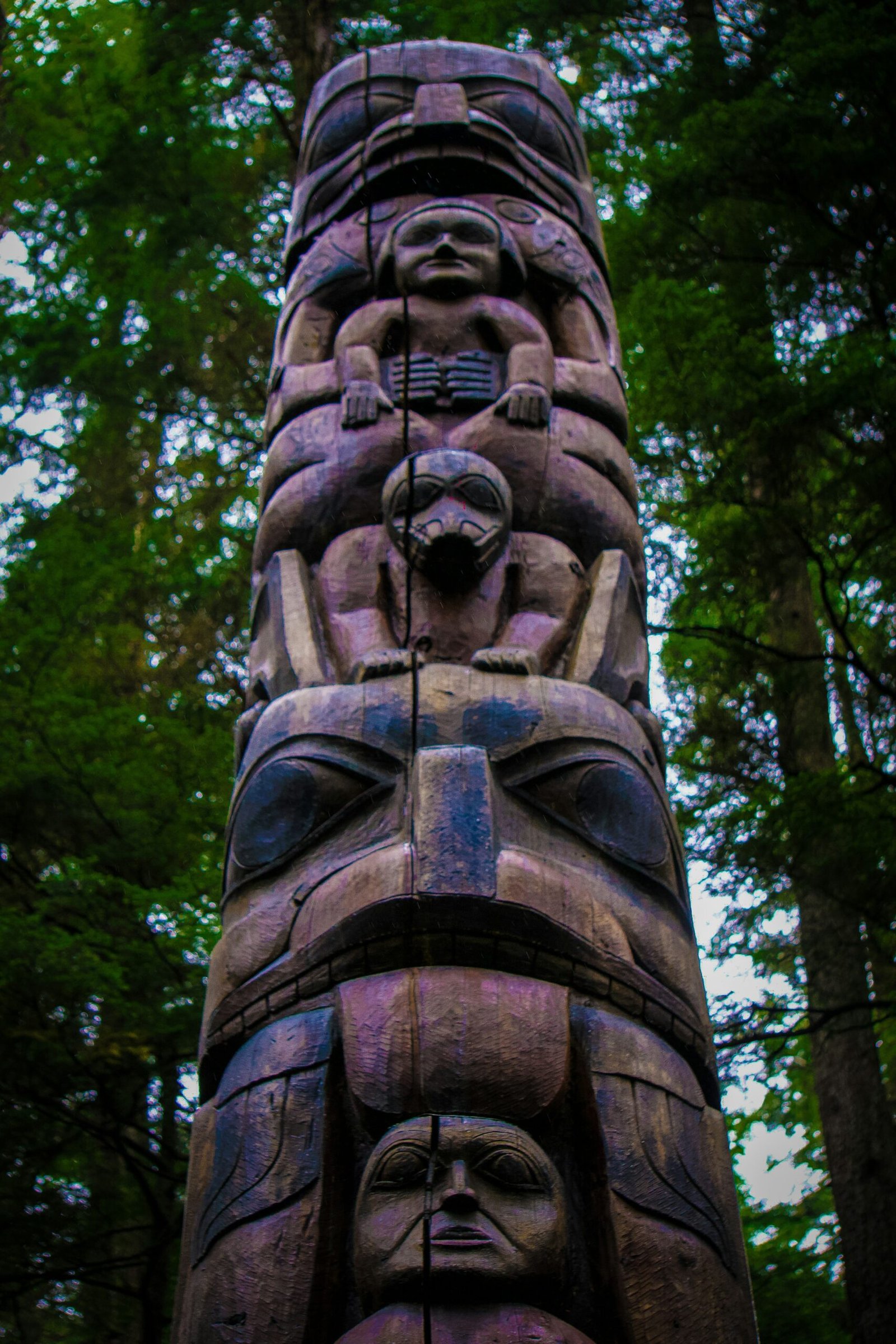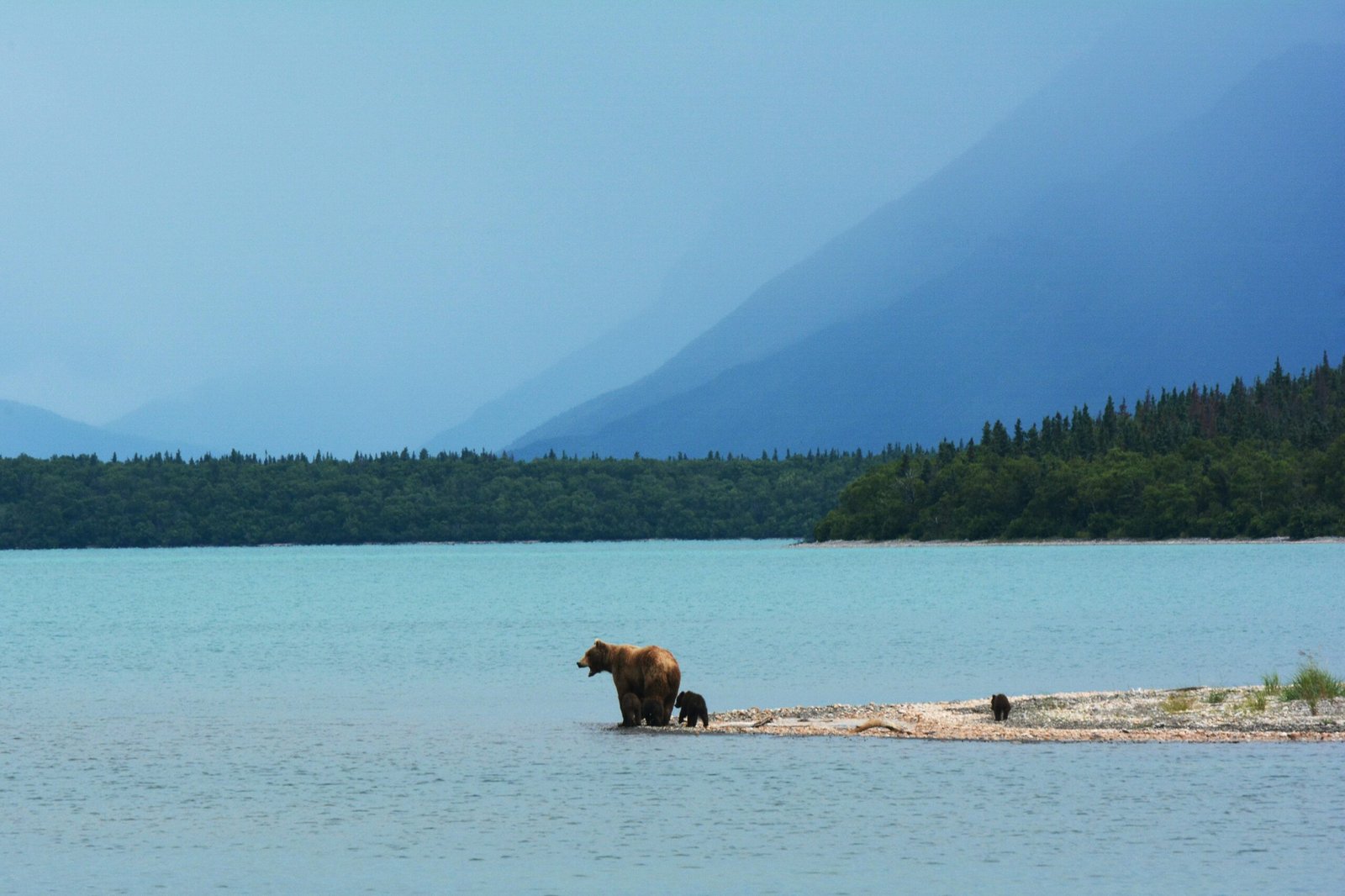
As visitors enter Sitka National Historical Park, they are immediately greeted by the awe-inspiring beauty of the surrounding landscapes. Towering mountains covered in lush green forests create a dramatic backdrop, while crystal-clear streams and rivers meander through the park, adding to its natural charm. The park’s coastline offers stunning views of the Pacific Ocean, with its calm waters reflecting the vibrant colors of the sky during sunrise and sunset.
But Sitka National Historical Park is not just a feast for the eyes; it is also a place of great cultural significance. The park is home to the Kiks.ádi Clan House, a traditional Tlingit longhouse that serves as a testament to the rich indigenous heritage of the area. Inside the Clan House, visitors can learn about the history and traditions of the Tlingit people through interactive exhibits and displays. The intricate carvings and vibrant artwork adorning the walls of the Clan House are a testament to the skill and craftsmanship of the Tlingit artisans.
Another highlight of Sitka National Historical Park is the Totem Trail, a winding path that takes visitors through a forest filled with majestic totem poles. These totems, carved by Native artists, tell stories of the Tlingit, Haida, and Tsimshian cultures, depicting legends, family histories, and important events. Walking along the trail, visitors can learn about the symbolism and meaning behind each totem, gaining a deeper understanding of the cultural significance they hold.
For nature enthusiasts, Sitka National Historical Park offers a chance to explore a diverse range of ecosystems. The park is home to a variety of wildlife, including bald eagles, black bears, and Sitka black-tailed deer. Birdwatchers will delight in the opportunity to spot migratory birds that make their home in the park during the summer months. The park’s coastal areas are also teeming with marine life, from sea otters to humpback whales, providing a unique opportunity for visitors to witness these magnificent creatures in their natural habitat.
Whether you are interested in history, nature, or simply seeking a peaceful retreat in the midst of stunning scenery, Sitka National Historical Park has something to offer. Its combination of breathtaking landscapes, rich cultural heritage, and diverse wildlife make it a must-visit destination for anyone exploring the beauty of Alaska.
The Tlingit people have a rich and vibrant history that is deeply intertwined with the land and resources of the park. For thousands of years, they have relied on the abundant natural resources of the area for sustenance and cultural practices. The Tlingit have developed a profound understanding and respect for the land, which is reflected in their intricate carvings and artwork.
The totem poles in the park are not just decorative pieces, but they serve as a visual representation of the Tlingit culture and heritage. Each totem pole tells a unique story or legend, passed down through generations, and serves as a way to preserve and share the rich oral traditions of the Tlingit people. As visitors explore the totem pole trail, they are immersed in a world of mythology and symbolism, gaining a deeper appreciation for the Tlingit way of life.
In addition to the totem poles, the Russian Bishop’s House stands as a testament to the region’s colonial history. Built during the Russian colonial period, the house provides a fascinating glimpse into the lives of the early settlers and the complex interactions between the Russian settlers and the indigenous Tlingit people. The house is a well-preserved example of Russian architecture and offers visitors a chance to learn about the cultural exchange and conflicts that occurred during this time.
The park itself is a living testament to the resilience and adaptability of the Tlingit people. Despite the challenges they have faced throughout history, the Tlingit have continued to maintain their cultural practices and connection to the land. The park serves as a gathering place for the Tlingit community, where they can come together to celebrate their heritage and pass on their traditions to future generations.
Overall, the park is not just a place of natural beauty, but it is a living museum of Tlingit history and culture. It provides a unique opportunity for visitors to learn about and appreciate the rich cultural heritage of the Tlingit people, while also enjoying the stunning natural landscapes that have shaped their way of life for centuries.
Nature and Wildlife
In addition to its cultural significance, Sitka National Historical Park boasts stunning natural beauty. The park is nestled between the Pacific Ocean and the majestic mountains, offering breathtaking views of the surrounding landscape.
The park is home to a diverse range of wildlife, including bald eagles, brown bears, and salmon. Visitors can witness the annual salmon runs, where thousands of fish swim upstream to spawn. This natural phenomenon attracts not only wildlife enthusiasts but also photographers and nature lovers from around the world.
The park also features several hiking trails that allow visitors to explore the wilderness and immerse themselves in the serene beauty of the Alaskan wilderness. From easy strolls to more challenging hikes, there is a trail for every level of adventurer.
One of the most popular trails in the park is the Totem Trail. This trail winds through a lush forest, showcasing ancient totem poles that stand as a testament to the rich Native American history of the area. As visitors walk along the trail, they can learn about the different tribes that once inhabited the land and gain a deeper understanding of their traditions and beliefs.
For those seeking a more immersive experience, the park offers camping facilities where visitors can spend the night under the stars. Waking up to the sounds of nature and the crisp mountain air is an experience like no other. Campers can enjoy cooking meals over a campfire and sharing stories with fellow nature enthusiasts.
In addition to the wildlife and hiking opportunities, Sitka National Historical Park is also a haven for birdwatchers. The park is a stopover point for many migratory bird species, making it a prime location for birdwatching. Visitors can spot a wide variety of birds, from colorful songbirds to majestic raptors, as they make their way through the park.
Whether you are interested in exploring the cultural history of the area, immersing yourself in the beauty of nature, or simply enjoying a peaceful retreat in the wilderness, Sitka National Historical Park has something to offer everyone. With its stunning views, diverse wildlife, and range of activities, it is truly a gem of Alaska’s national park system.
In addition to guided tours and workshops, Sitka National Historical Park offers a range of outdoor activities for visitors to enjoy. The park features several hiking trails that wind through lush forests and offer breathtaking views of the surrounding landscape. These trails vary in difficulty, catering to both novice hikers and experienced adventurers.
One of the most popular trails in the park is the Totem Loop Trail, which takes visitors on a journey through a dense forest adorned with intricately carved totem poles. Along the way, interpretive signs provide information about the significance of each totem and its cultural importance to the Tlingit people.
For those interested in birdwatching, Sitka National Historical Park is a haven for avian enthusiasts. The park is home to a diverse range of bird species, including bald eagles, herons, and various migratory birds. Binoculars are a must-have for spotting these feathered creatures in their natural habitat.
Another highlight of the park is the coastal area, where visitors can explore the rocky shores and observe marine life. Low tide reveals tide pools teeming with colorful sea stars, anemones, and other fascinating creatures. It’s a great opportunity for both children and adults to learn about the marine ecosystem and its delicate balance.
When planning a visit to Sitka National Historical Park, it’s worth considering the local events and festivals that take place throughout the year. The park often hosts cultural celebrations, such as traditional dance performances and storytelling sessions, which provide a deeper understanding of the Tlingit heritage.
In conclusion, Sitka National Historical Park offers a wide range of activities and experiences for visitors of all ages. Whether you’re interested in history, nature, or cultural immersion, this park has something to offer. So, pack your bags, put on your hiking boots, and get ready for an unforgettable adventure in Sitka, Alaska.
Preserving the Past for Future Generations
Sitka National Historical Park plays a crucial role in preserving the rich cultural heritage of the Tlingit people and the natural beauty of the Alaskan wilderness. The park’s conservation efforts ensure that future generations can continue to appreciate and learn from this unique and significant place.
Whether you’re a history buff, nature enthusiast, or simply seeking a serene and awe-inspiring destination, Sitka National Historical Park is a must-visit. With its blend of cultural significance and natural beauty, it offers a truly unforgettable experience for all who venture within its boundaries.
As you explore the park, you’ll be transported back in time to when the Tlingit people thrived in this region. The park’s collection of totem poles, which are intricately carved and tell stories of the Tlingit culture, serve as a powerful reminder of the past. These totem poles are not only works of art but also serve as a link between generations, passing down stories and traditions from one era to the next.
But Sitka National Historical Park is not just about preserving the past; it also plays a vital role in conserving the natural beauty of the Alaskan wilderness. The park encompasses a diverse range of ecosystems, including lush forests, pristine coastline, and meandering rivers. These habitats provide a home to a variety of wildlife, including bald eagles, brown bears, and salmon.
Through careful management and stewardship, the park ensures that these ecosystems remain intact for future generations to enjoy. This involves implementing sustainable practices, such as limiting human impact on sensitive areas, monitoring wildlife populations, and conducting research to better understand and protect the park’s natural resources.
Visitors to Sitka National Historical Park can participate in a range of activities that allow them to connect with both the cultural and natural aspects of the park. Guided tours led by knowledgeable rangers provide insights into the Tlingit culture and the significance of the totem poles. Hiking trails wind through the park, offering opportunities to immerse oneself in the beauty of the wilderness.
For those seeking a more immersive experience, camping is available within the park. Falling asleep to the sounds of nature and waking up to breathtaking views is an experience that will stay with you long after you leave Sitka National Historical Park.
Preserving the past and conserving the natural beauty of the Alaskan wilderness are at the heart of Sitka National Historical Park’s mission. By visiting this remarkable place, you not only have the opportunity to learn and be inspired but also contribute to the ongoing efforts to protect and preserve this invaluable cultural and natural heritage for generations to come.




